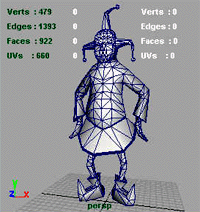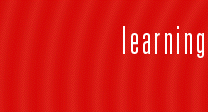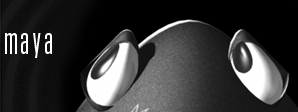|
Modeling | Texturing | Character | Level Building
 Object and character models can be built from reference sketches. These reference sketches can easily be brought into Maya's modeling views and manipulated to help keep assets on the same scale. These assets should be created with the intention of existing within a game environment. Object and character models can be built from reference sketches. These reference sketches can easily be brought into Maya's modeling views and manipulated to help keep assets on the same scale. These assets should be created with the intention of existing within a game environment.
The issues associated with implementing a model in the interactive environment of a game's real time engine differ greatly from those associated with the playback of a series of pre-rendered images like in a movie. Game players have a choice and actively influence movement on screen, camera/player views, and trigger events. Maintaining real-time feedback and interaction to a player's input is an essential part of a game's success.
As polygon counts increase and frame rates rise, the player experiences gameplay that begins to blur the lines between video game and movie. It is this real-time interaction that provides the suspension of disbelief. The boundaries are being crossed that make the player believe he/she is directly interacting with this virtual environment and not simply viewing the interactive world through the eyes of another. |
Polygon Geometry
|
| In order for today's games to maintain appropriate frame rates and real-time interaction, the use of polygonal geometry is required. Polygon geometry is computationally less data intensive than NURBS or Subd's and therefore takes less time to evaluate. In these environments, the number of polygons as well as texture sizes and amounts of scene specific data are critical elements. Their importance is a result of their direct relationship to the time that is required to process data, to display information to the screen, and to react to user input. Try our Polygon Modeling how-to for step-by-step instruction on how to build a polygon model.
With the release of next generation hardware on the horizon, new geometry types are being explored. Bezier patches are already being implemented, with NURBS and possibly Subdivision Surfaces considered for smooth surface geometry. These surfaces have an advantage over polygons in that they require less storage, can be tessellated to any number of polygons at runtime which allows for a dynamic level of detail, and can describe a curved surface better than polygons can. All these geometry types must be calculated down to polygons as that is all the hardware is capable of displaying. |
Counting Polygons
|
 Typically, a character model will range between 200 - 1200 polygon faces. However, these numbers are constantly increasing with the advent of new technologies. Typically, a character model will range between 200 - 1200 polygon faces. However, these numbers are constantly increasing with the advent of new technologies.
This Jester character is comprised of 922 triangular faces.
Some considerations dictating polygon counts are:
- Machine power (CPU speeds, graphics card capabilities, RAM)
- Detail requirements of models (i.e.: Distance from camera.)
- Are they going to be closely examined by the viewer?
- Is extra surface information required for deformations?
- How many other characters/models will be on screen at the same time affecting full scene polygon counts? (i.e.: Number of players in a sports game or number of villains visible at one time in a first person shooter).
One of the advantages that smooth surfaces have over polygon models is that they can be tessellated based on their proximity to the camera. The game engine can calculate how many models are on screen and decide how many polygons each smooth surface should be tessellated down to.
Multi-resolution Mesh and Adaptive Tessellation are terms that are quickly becoming a hot topic in the games industry. They are algorithms that can reduce or increase a models polygon count based on how close or far the model is from the camera. This can give the game real time Level of Detail and allow more objects or objects of higher complexity to be seen on screen. |
Modeling Strategies
|
Some commonly used approaches to modeling polygons are:
- Cube-up: Starting with a primitive shape as a base and then building up from it, primarily via extrusions).
- Face by face: Creating each face of the model one by one.
- NURBS to Polygons: Working with NURBS surfaces that are then converted to Polygonal ones.
- NURBS to Beziers: Create NURBS surfaces and then convert to bezier surfaces
- Subdivision surfaces: Model a base model from polygons or NURBS and convert to Sub-d's. The Sub-d's are further refined to reach the final model and any unnecessary refinements are removed. The surface is then converted back to polygons or to NURBS and then beziers.
These approaches are often used in conjunction with one another and will require basic refinements to be accomplished at the component level, with fundamental tools such as move, scale, and rotate. |
| Even with higher order surfaces being used, the model must still be made with the idea of going to a games engine. This means that the surfaces should be as optimized as possible in order to ensure a clean transition to another geometry type to another. |
 |
This Jester character was created using the cube-up method of modeling, with further tweaks involving collapsing, splitting faces and pulling vertices. Re-use of character models helped save time by editing them into new unique characters. |
|





